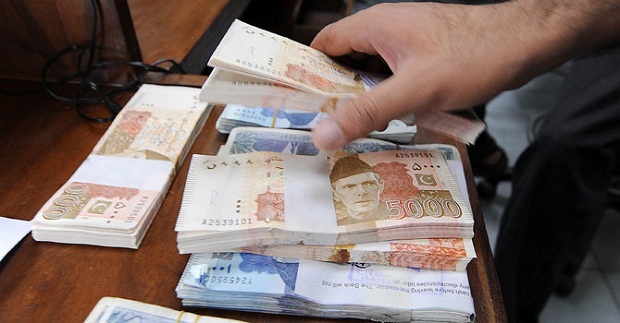LAHORE: State Bank of Pakistan (SBP) may intensify dollar buying following currency volatility that suggests improved dollar supply-demand dynamics, SBP sources told Pakistan Today.
Sources believe improved dollar supply in both open and interbank market allows the central bank to accelerate its dollar purchases and build a cushion. They say that the movement of currency in the open market was down by 6 per cent and inter-bank by 3.5 per cent in early morning trade, suggests improved dollar supply-demand dynamics.
Besides CPEC-related machinery imports, they said overvaluation of Pakistan rupee with an average of 17 per cent over 2013-18 was one of the key reasons for a significant increase in trade deficit over 2016-2018.
They said that 22 per cent devaluation of the rupee since December 2017 has reduced overvaluation to 13.5 per cent, gauged by real 9 per cent Effective Exchange Rate including devaluation in July 1208. However, they reiterated that there is a need to take further steps for additional trimming of overvaluation, which appears unsustainable as Pakistan enters into a new IMF programme.
The market-based adjustment is reflective of the country’s external balance of payments position, which is under pressure owing to a large trade deficit, they said adding SBP expects the devaluation, interest rate increase and other measures “to contain the imbalances in the external account.”
Some analysts expect the currency to drop further. Standard Chartered Plc cut its forecast for the rupee this month by saying the IMF may ask the authorities to weaken it even further.
Experts say Pakistan’s economic growth will slow down in 2018 for the first time in six years. The nation’s foreign-exchange reserves have dropped to the lowest in more than three years, the current-account deficit has widened, and external debt and liabilities as a percentage of gross domestic product climbed to the highest in almost six years in the first quarter.
“It was becoming increasingly difficult to manage the local currency at the current level with dropping forex reserves,’’ they said adding “The nation’s current-account deficit had become sizable and foreign debt repayment obligations were also rising.”
Pakistan’s central bank increased its policy rate to 6.5 per cent last month, the highest in almost three years, citing a deteriorating economic backdrop. They expect “ongoing pressure on Pakistan’s foreign exchange reserves, arising from the country’s large refinancing needs and its widening current account deficit”. The import cover of foreign exchange reserves has consequently fallen to less than 2.5 months, which is below the IMF’s recommended minimum adequacy level of three months, they added. They warned that moderately large and rising share of foreign currency borrowing may further expose the sovereign credit profile to sharp currency depreciation.
























